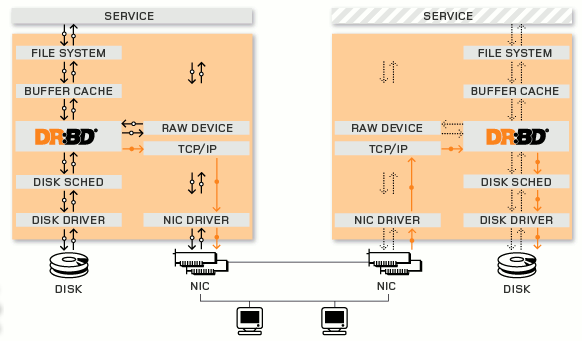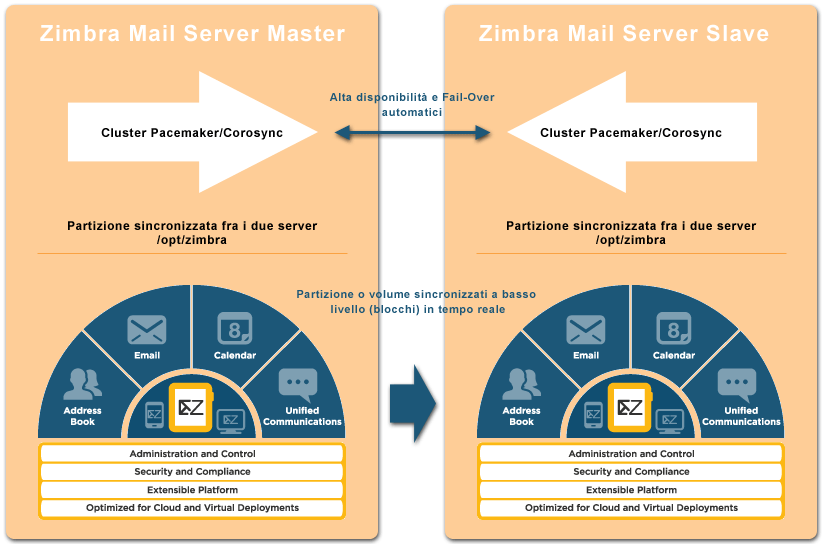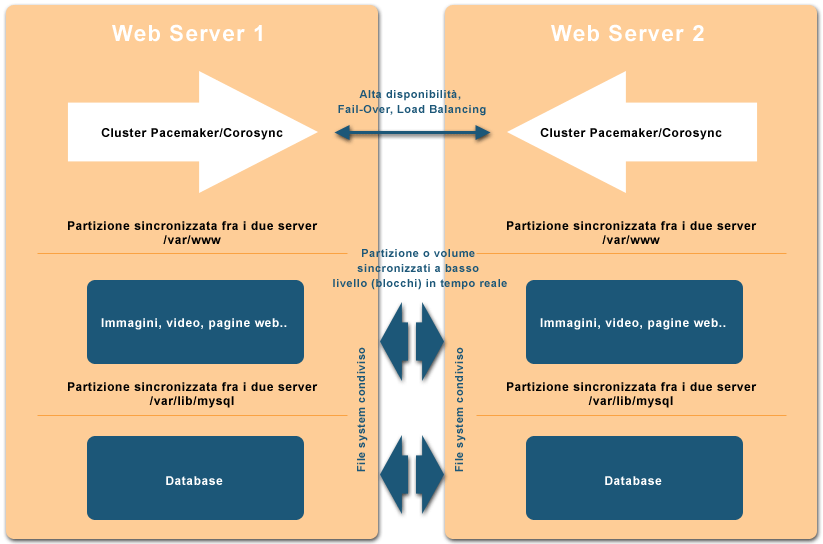Dedicated Servers, CLUSTER DRBD PACEMACKER COROSYNC
HA CLUSTER Servers RAID
Solutions that require continuity of service, require suitable Hardware / Software architectures.
we can guarantee a ~100% SLA through cost effective solutions.
DRBD (http://www.drbd.org)
(Distributed Replicated Block Device) is a distributed storage system for the GNU/Linux platform.
It consists of a kernel module, several userspace management applications and some shell scripts and is normally used on high availability (HA) clusters. DRBD bears similarities to RAID 1, except that it runs over a network.
DRBD refers to both the software (kernel module and associated userspace tools),
and to logical block devices managed by the software.
DRBD device and DRBD block device are also often used for the latter.
Advantages over shared cluster storage:
Conventional computer cluster systems typically use some sort of shared storage for data being used by cluster resources.
This approach has a number of disadvantages, which DRBD may help offset:
- Shared storage resources usually introduce a single point of failure in the cluster setup — while each of the cluster nodes may fail without causing service interruption, storage failure almost inevitably causes service downtime. In DRBD, no such issues exist as the cluster resource data is replicated rather than shared.
- Shared storage resources are particularly sensitive to split brain situations, where both cluster nodes are still alive, but lose all network connectivity between them. In such a scenario, each cluster node will assume that it is the only surviving node in the cluster, and take over all cluster resources. This may lead to potentially disastrous results when both nodes, for example, mount and write to file systems concurrently. Cluster administrators must thus carefully implement node fencing policies to avoid this. DRBD substantially mitigates this problem by keeping two replicated sets of data instead of one shared set.
- Shared storage resources must typically be addressed over a SAN or NAS, which creates some overhead in read I/O. In DRBD that overhead is greatly reduced as all read operations are carried out locally.
- Shared storage are usually expensive, consume more space (2U and more) and power. DRBD allows to create a HA setup with only 2 machines.

Some Examples:
Two Node Zimbra Mail server Cluster
Web-server-cluster-active-active.png

Two or more nodes High Availability Webserver Cluster

|



